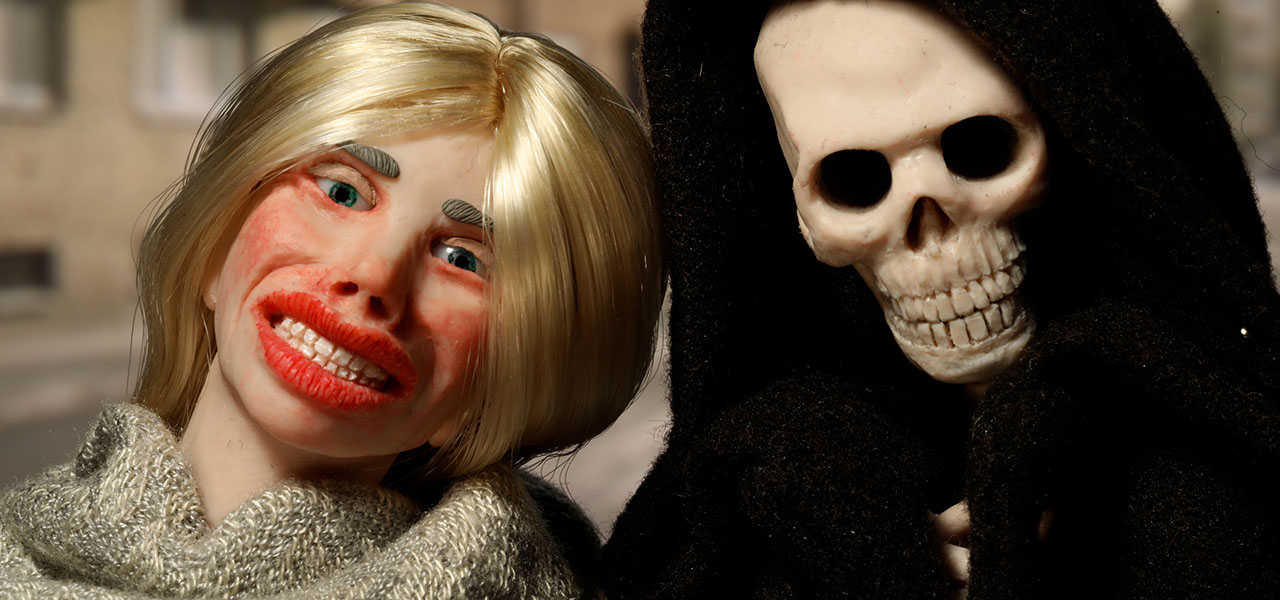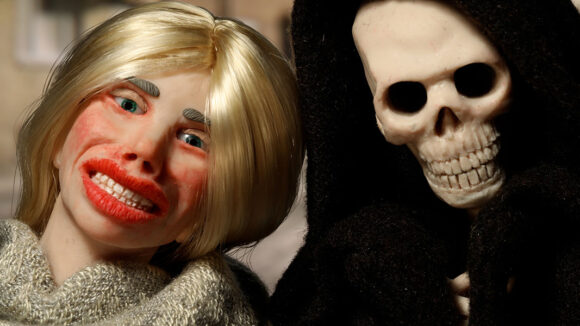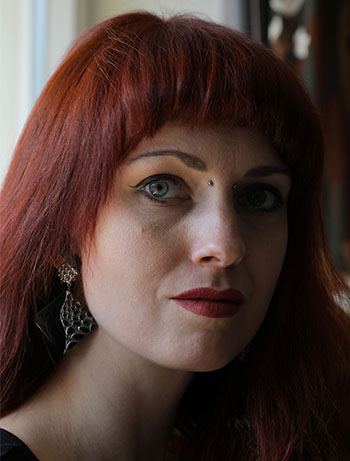

2025 Oscars Short Film Contenders: ‘The Lovers’ Director Caroline Sandvik
Cartoon Brew is putting the spotlight on animated short films that have qualified for the 2025 Oscars.
In this installment, we’re looking at The Lovers from Swedish filmmaker Carolina Sandvik. The short earned its Oscars qualification by winning the best Nordic short at Nordisk Panorama.
How do relationships transform the people taking part in it? In this short mixing horror and unromantic comedy, Carolina Sandvik unveils her own vision about the life of a couple forced to deal with escalating bodily transformations. The film is produced by Malmö-based We Have a Plan.
Cartoon Brew: Silence and the inability to share one’s feelings with communication takes a big part in the deteriorating relationship between your two characters. How does that mirror your opinion on modern couples and relationships?

Carolina Sandvik: It’s a silent movie in the sense that it has no dialogue, but the images are not a means to express words or text, but they are the message themselves. I would never be able to write dialogue, I can’t even imagine what these puppets would say. My film is everything but an opinion. I am interested in relationships. I myself try to understand how to be a human interacting with other humans. Relationships are hard. My puppets are trying their best. They are together but somehow distant. There is a contemporary obsession with our own individuality and self optimization that I’m inspired by in this film. My characters are literally able to buy new faces for themselves. They can be resurrected over and over again. Is that heaven or hell? I have my opinion, but I’ll let the audience decide for themselves.
What was it about this story or concept that connected with you and compelled you to direct the film?
This is a dream. Are dreams symbolic? Maybe, if you ask Freud. Maybe it is the subconscious trying to send you a message. Maybe it’s just decorative brain garbage. I think a lot about relationships. I have also been marinated in horror films since my teens and it has become a natural part of my mindset when I make up stories. Though I should say I don’t really consider my own films to be genre films but they are heavily influenced by them. I simply find it satisfying to watch and create those drastic elements.
Horror films tend to speak to us directly through emotions and basic reactions. My ideas start with emotions, fantasies, and mysterious images rather than with a concept or the urge to convey a certain message. I trust my idea to unfold like a dream, and that’s where I derail from the genre track. I don’t necessarily follow a straight forward dramaturgical curve, but I trust my intuition a lot. For me that means I get closer to a kind of sincerity, and the result is more dreamlike than clever.
What did you learn through the experience of making this film, either production-wise, filmmaking-wise, creatively, or about the subject matter?
I learnt how to invent the sound of skeleton feet walking on the floor. I picked twigs (fresh and dry) and held them in a bundle and twisted them until I got a squeaking sound, or put them on a chair and pressed them with my hand. Sound is usually more of a challenge than the visuals. When it comes to the visual part it’s easier for me to translate an idea to physical form by sculpting and animating. Since the process is so time-consuming I usually only do one take and I don’t have a lot of extra material when I’m done shooting. But with sound it’s a completely different thing. But it’s a lot of fun. I really like that I get to invent my own world, and making sound for animation really means you create everything from scratch.
I also learnt how to mix the exact right amount of glue and acrylic paint to create skin that is easy to peel off. I learnt that a 30-second tracking shot takes 14 hours to animate. I also learnt how to work with a producer, which meant I could stay in my studio and play with dolls, while she would be a grown-up and take care of all the boring stuff.
Can you describe how you developed your visual approach to the film? Why did you settle on this style/technique?
Stop motion is the only technique I know. But I’m more inspired by live-action horror films pre-cgi, back when you would use masks, practical effects, and even stop motion in live-action films. It’s very important to me that everything you see happens “for real” in front of the camera and on set. I would never add or erase anything in post. The slowness and the obstacles are part of the process. I like the contrast between the everyday subject of a relationship falling apart and the gore that illustrates it. I think the animation technique works well because it means I build a whole universe from scratch. And within this universe there is equal room for the mundane and relatable as well as the fantastic and absurd. There is no visible difference between the character’s face and the masks he covers it with.

.png)